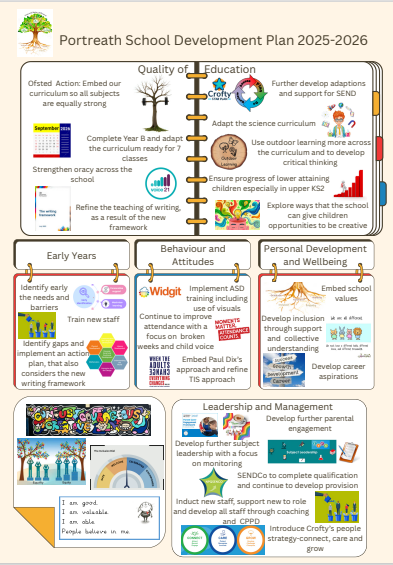School Development
Each year the school creates a school development plan that is about how we plan to improve the school during the year. It focuses on a few key priorities. This is not to say the school is not working on other things too, but the priorities are the focus of training and monitoring. The priorities in our School Development Plan are based on the following key evaluative work:
- Our analysis of summative assessment data regarding the children’s attainment and progress
- Ongoing monitoring by SLT and subject leaders
- Discussions with staff and governors, including our annual review twilight session in June
- External views and recommendations from things such our SILC visits with the Crofty Education Trust
- Parent views from questionnaires
- Children’s views from pupil conferencing
As well as creating a school development plan document and related action plans, we create a poster to capture what we are focusing on. The poster attempts to capture what we are exploring and doing. It acts as a prompt and starting point for discussion with staff about the priorities and it also acts as a visual reminder. We like to share it with parents too, to give them an idea of our areas of focus for development.

